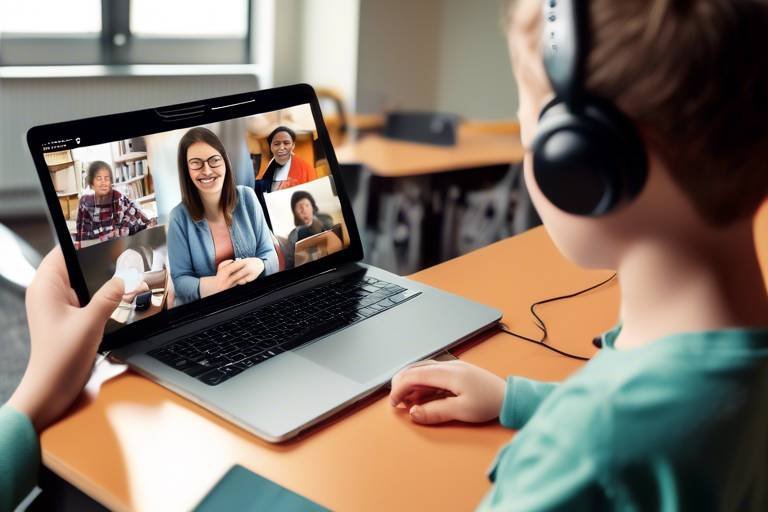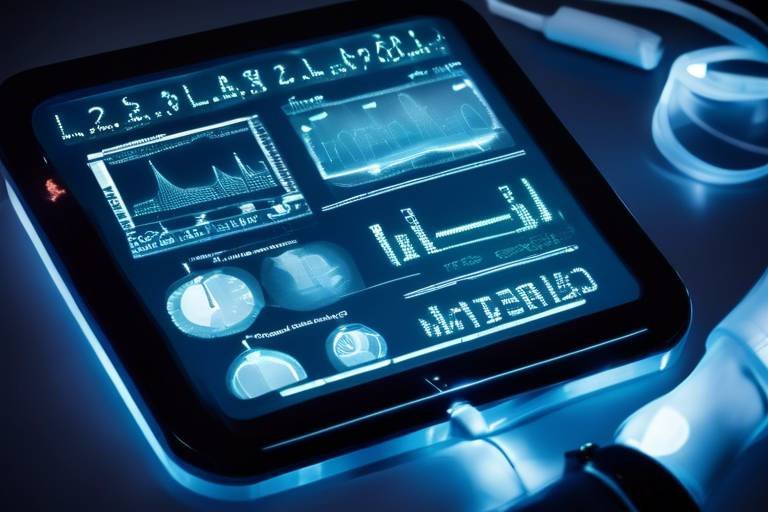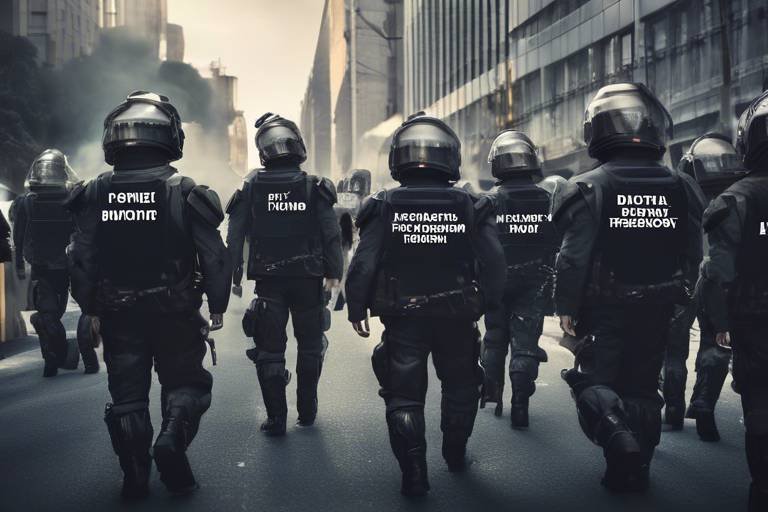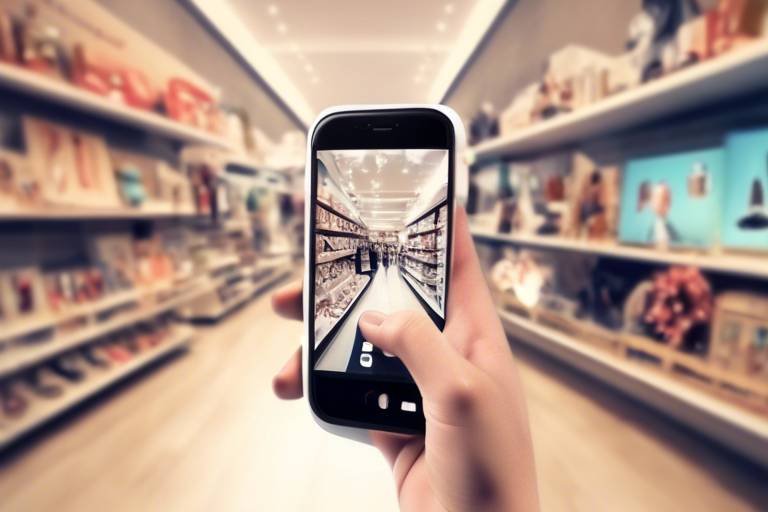How Technology Will Enhance Disaster Recovery Efforts
In today's world, where natural disasters seem to strike with alarming frequency, the need for effective disaster recovery has never been more critical. Technology is stepping up to the plate, transforming the way we respond to crises and recover from them. Imagine a world where drones fly over disaster zones, capturing real-time images, while artificial intelligence analyzes data to predict the next steps for recovery. This isn’t just a futuristic dream; it’s happening now. The integration of innovative tools and strategies is not only improving response times but also enhancing resource management and community resilience. So, how exactly is technology reshaping disaster recovery? Let’s dive into the remarkable innovations that are making a significant impact.
Innovative technologies like drones, artificial intelligence (AI), and the Internet of Things (IoT) are revolutionizing disaster response. These tools enhance situational awareness, streamline communication, and facilitate rapid assessment of damage, ultimately leading to more effective recovery efforts. For instance, drones can survey areas that are otherwise inaccessible due to debris or hazardous conditions, providing first responders with crucial information. Meanwhile, AI can analyze this data quickly, allowing for better decision-making. The IoT connects various devices, enabling real-time monitoring of conditions and resources, which is vital during a disaster.
Data analytics plays a crucial role in disaster recovery by providing insights into patterns and trends. Analyzing historical data helps organizations prepare better and allocate resources more efficiently during crises. By examining past disasters, agencies can identify what worked and what didn’t, leading to improved strategies for future events. This data-driven approach not only enhances preparedness but also ensures that resources are directed where they are needed most.
Predictive modeling uses historical data to forecast potential disaster scenarios. This proactive approach allows agencies to anticipate needs and deploy resources effectively, minimizing the impact of disasters on communities. For example, if historical data indicates that a specific region is prone to flooding, agencies can pre-position resources and supplies in that area, ensuring a quicker response when disaster strikes. This kind of foresight can save lives and reduce the overall cost of recovery.
Risk assessment techniques help identify vulnerable areas and populations. By understanding these risks, organizations can prioritize their recovery efforts and implement targeted strategies to protect at-risk communities. For instance, by mapping out high-risk zones, agencies can focus their resources on those areas that are most likely to be affected. This targeted approach not only increases efficiency but also enhances community safety.
Real-time data collection during disasters enables responders to make informed decisions quickly. Technologies like mobile apps and social media provide critical information that aids in immediate response and recovery planning. For example, social media can be used to crowdsource information about the conditions on the ground, allowing agencies to adjust their strategies in real-time. This adaptability is essential in a rapidly changing disaster environment.
Collaboration tools enhance communication between agencies and organizations involved in disaster recovery. These platforms ensure that all stakeholders are informed and coordinated, improving overall efficiency and effectiveness in response efforts. By utilizing shared platforms for communication, agencies can avoid duplicating efforts and ensure that resources are allocated appropriately. This level of coordination is crucial when every second counts during a disaster.
Engaging communities through technology fosters resilience. Mobile platforms and social media campaigns empower individuals to participate in recovery efforts, share information, and support one another during challenging times. When communities are engaged and informed, they can react more effectively to disasters, which ultimately leads to quicker recovery.
Mobile applications provide users with essential information and resources during disasters. These apps can assist with locating shelters, accessing emergency services, and connecting with local support networks, enhancing community resilience. Imagine having a tool in your pocket that not only tells you where the nearest shelter is but also connects you with neighbors who can offer support. This kind of connectivity can make all the difference in a crisis.
Social media platforms serve as vital communication channels during disasters. They facilitate real-time updates, enable community interaction, and help disseminate critical information to those affected, enhancing overall recovery efforts. During emergencies, social media can spread information faster than traditional media, allowing communities to stay informed and connected. This immediacy can be a game-changer in disaster recovery.
- How can technology improve disaster response times?
By providing real-time data and enhancing communication, technology allows responders to make quicker, more informed decisions.
- What role do mobile apps play in disaster recovery?
Mobile apps can provide crucial information about shelters, emergency services, and local support networks, helping communities recover more effectively.
- How does data analytics aid in disaster preparedness?
Data analytics helps organizations analyze historical trends, allowing them to anticipate needs and allocate resources more efficiently during crises.

Emerging Technologies in Disaster Response
The landscape of disaster response is undergoing a seismic shift, thanks to the advent of emerging technologies like drones, artificial intelligence (AI), and the Internet of Things (IoT). These innovations are not just buzzwords; they are redefining how we approach disaster management. Imagine a scenario where a disaster strikes, and within minutes, drones are flying overhead, capturing real-time images of the affected areas. This is not science fiction; it’s happening right now!
Drones, for instance, are proving to be invaluable in disaster scenarios. They can cover large areas quickly, providing situational awareness that was previously unattainable. With high-resolution cameras, drones can assess damage, identify hazards, and even locate survivors in hard-to-reach areas. This capability allows emergency responders to prioritize their efforts and allocate resources where they are needed most. The speed at which drones can gather and relay information is a game-changer, significantly reducing the time it takes to formulate a response strategy.
On the other hand, AI is enhancing the decision-making process during disasters. By analyzing vast amounts of data, AI can identify patterns and predict the impact of various disaster scenarios. For example, AI algorithms can process historical data on floods, earthquakes, or hurricanes to forecast their potential effects based on current conditions. This predictive capability allows agencies to prepare proactively, ensuring that resources are deployed efficiently and effectively. Imagine being able to foresee a disaster’s impact before it occurs—this is the power of AI!
The IoT also plays a crucial role in disaster response. With interconnected devices, data can be collected in real-time from various sources, such as weather stations, traffic cameras, and even social media feeds. This wealth of information enables responders to make informed decisions quickly. For example, during a hurricane, sensors can monitor wind speeds and rainfall, while social media can provide insights into public sentiment and needs. This combination of data sources creates a comprehensive picture of the situation, allowing for a more coordinated and effective response.
Furthermore, collaboration tools are emerging as essential components of disaster response. These platforms facilitate seamless communication between agencies, NGOs, and community members. When everyone is on the same page, response efforts are more efficient. Imagine a command center where every stakeholder can access real-time data, share updates, and coordinate their actions. This level of collaboration not only improves response times but also fosters a sense of community, as individuals can contribute and stay informed.
In summary, the integration of drones, AI, IoT, and collaboration tools is transforming disaster response in profound ways. These technologies enhance situational awareness, improve decision-making, and foster collaboration among various stakeholders. As we continue to innovate, the future of disaster recovery looks brighter and more resilient than ever.

The Role of Data Analytics
Data analytics is not just a buzzword; it’s a game-changer in the realm of disaster recovery. By harnessing the power of data, organizations can gain invaluable insights that guide their response strategies. Imagine trying to navigate through a dense fog without a map; that’s what disaster recovery looks like without proper data analytics. With the right tools and techniques, agencies can cut through the uncertainty and make informed decisions that save lives and resources.
One of the most significant advantages of data analytics in disaster recovery is its ability to uncover patterns and trends. By analyzing historical data, organizations can identify which areas are most vulnerable to disasters and when these events are likely to occur. This foresight allows for better preparation and resource allocation during crises. For instance, if data shows that a particular region is prone to flooding during certain months, agencies can pre-position resources and staff in anticipation of potential disasters.
Additionally, predictive modeling is a crucial aspect of data analytics that enhances preparedness. This technique leverages historical data to forecast potential disaster scenarios. Think of it as a weather forecast for disasters—just as meteorologists use past weather patterns to predict storms, agencies can use past disaster data to anticipate needs and deploy resources effectively. This proactive approach minimizes the impact on communities, ensuring that help is on the way before disaster strikes.
Another vital component of data analytics is risk assessment. By employing various risk assessment techniques, organizations can pinpoint vulnerable areas and populations. This understanding is akin to having a spotlight in a dark room; it illuminates the risks that might otherwise go unnoticed. With this information, agencies can prioritize their recovery efforts and implement targeted strategies to protect at-risk communities. For example, if data indicates that certain neighborhoods are more susceptible to wildfires, targeted educational campaigns and resource allocation can be deployed to those areas.
The importance of real-time data collection during disasters cannot be overstated. In the chaos of a disaster, every second counts. Technologies such as mobile apps and social media platforms enable responders to gather critical information quickly. This real-time data acts like a pulse check on the situation, providing responders with insights that aid in immediate response and recovery planning. For instance, social media can reveal where people are stranded or in need of help, allowing for a quicker and more efficient response.
In summary, data analytics plays a pivotal role in disaster recovery by transforming raw data into actionable insights. Whether it’s through predictive modeling, risk assessment, or real-time data collection, the ability to analyze and interpret data can significantly enhance the effectiveness of recovery efforts. As technology continues to evolve, the integration of advanced analytics will undoubtedly lead to even more innovative solutions for disaster management.
- What is data analytics in disaster recovery?
Data analytics in disaster recovery refers to the process of collecting, analyzing, and interpreting data to improve response strategies and resource allocation during and after disasters. - How does predictive modeling help in disaster preparedness?
Predictive modeling uses historical data to forecast potential disaster scenarios, allowing agencies to anticipate needs and deploy resources effectively. - Why is real-time data collection important during disasters?
Real-time data collection enables responders to make informed decisions quickly, ensuring that help reaches those in need as fast as possible. - What are risk assessment techniques?
Risk assessment techniques help identify vulnerable areas and populations, allowing organizations to prioritize recovery efforts and protect at-risk communities.

Predictive Modeling for Preparedness
Predictive modeling is like having a crystal ball for disaster preparedness. By analyzing historical data, organizations can forecast potential disaster scenarios and effectively prepare for them. Imagine being able to predict a storm's path or the likelihood of an earthquake based on past events. This proactive approach allows emergency agencies to anticipate community needs and deploy resources where they are most needed, minimizing the impact of disasters on vulnerable populations.
One of the key benefits of predictive modeling is its ability to identify patterns and trends in disaster occurrences. For instance, if data shows that certain regions are more prone to flooding during specific months, agencies can take preemptive actions, such as reinforcing levees or conducting community awareness programs. This not only saves lives but also reduces economic losses.
To illustrate the effectiveness of predictive modeling, consider the following table that outlines various disaster types, their historical occurrence rates, and the corresponding preparedness measures that can be implemented:
| Disaster Type | Historical Occurrence Rate | Preparedness Measures |
|---|---|---|
| Floods | 3 times annually | Community drills, levee reinforcement |
| Hurricanes | Once every 5 years | Evacuation plans, shelter readiness |
| Earthquakes | Once every 10 years | Building codes, emergency kits |
Additionally, predictive modeling helps in resource allocation. By understanding which areas are likely to be affected by disasters, organizations can stockpile supplies and deploy personnel in advance, ensuring a quicker response when disaster strikes. This level of preparedness not only enhances the resilience of communities but also fosters trust between the public and emergency services.
In summary, predictive modeling is an essential tool in disaster preparedness. It empowers agencies to act rather than react, transforming the way we approach disaster management. By leveraging historical data, we can make informed decisions that ultimately save lives and protect communities.
Frequently Asked Questions
- What is predictive modeling? Predictive modeling is a statistical technique that uses historical data to forecast future events, particularly in the context of disasters.
- How does predictive modeling benefit disaster preparedness? It allows organizations to anticipate potential disasters, allocate resources effectively, and implement targeted preparedness measures.
- Can predictive modeling be used for all types of disasters? Yes, predictive modeling can be applied to various disaster types, including floods, hurricanes, and earthquakes, by analyzing relevant historical data.

Risk Assessment Techniques
Risk assessment techniques are essential for identifying and understanding the vulnerabilities that communities face in the wake of disasters. By employing a variety of methods, organizations can pinpoint high-risk areas and populations, enabling them to prioritize their recovery efforts effectively. One of the most common approaches involves the use of geospatial analysis, which utilizes geographic information systems (GIS) to map out risks based on factors such as population density, infrastructure, and historical disaster data. This visual representation allows agencies to see where the most significant threats lie and allocate resources accordingly.
Another valuable technique is the community-based risk assessment, which actively involves local residents in identifying risks within their neighborhoods. This participatory approach not only empowers communities but also ensures that the data collected is relevant and context-specific. Local knowledge can reveal hidden vulnerabilities that external assessments might overlook, leading to more tailored and effective recovery strategies.
Furthermore, organizations often employ statistical modeling to analyze historical data and predict future risks. By examining past disaster occurrences and their impacts, agencies can develop models that forecast potential scenarios. This proactive stance allows them to prepare for various outcomes, ensuring that resources are available when and where they are needed most.
| Risk Assessment Technique | Description |
|---|---|
| Geospatial Analysis | Utilizes GIS to map and visualize risks based on geographic and demographic data. |
| Community-Based Assessment | Engages local residents to identify risks, ensuring data relevance and community empowerment. |
| Statistical Modeling | Analyzes historical disaster data to predict future risks and prepare accordingly. |
In addition to these techniques, it is crucial to incorporate real-time monitoring systems that can assess risks as they evolve. Technologies such as remote sensing and IoT sensors can provide continuous data streams, allowing agencies to adapt their strategies on the fly. For example, during a flood, real-time data on water levels can inform evacuation plans and resource distribution, significantly enhancing the effectiveness of response efforts.
Ultimately, the goal of these risk assessment techniques is to create a comprehensive understanding of vulnerabilities, enabling organizations to implement targeted strategies that protect at-risk communities. By investing in these methodologies, we can enhance our disaster response capabilities and foster resilience in the face of inevitable challenges.
- What is the importance of risk assessment in disaster recovery? Risk assessment helps identify vulnerable areas and populations, allowing for prioritized recovery efforts and effective resource allocation.
- How can communities get involved in risk assessments? Communities can participate through community-based assessments, providing valuable local knowledge that enhances the relevance of the data collected.
- What technologies are used in risk assessment? Technologies such as GIS, remote sensing, and IoT sensors are commonly used to gather and analyze data for risk assessments.

Real-Time Data Collection
In the midst of a disaster, every second counts. Real-time data collection has emerged as a lifeline for responders, allowing them to make swift and informed decisions when time is of the essence. Imagine being in a chaotic situation, where traditional methods of gathering information simply can't keep up with the rapid unfolding of events. This is where technology steps in, transforming the landscape of disaster recovery.
Technologies such as mobile applications, drones, and social media platforms play a pivotal role in gathering crucial data during emergencies. For instance, mobile apps can enable users to report their location, share their status, and even send alerts about hazardous conditions in their vicinity. This crowd-sourced data becomes invaluable, creating a real-time picture of the disaster's impact.
Moreover, social media has revolutionized how information is disseminated. Platforms like Twitter and Facebook serve as real-time communication channels, where affected individuals can share updates, connect with loved ones, and receive critical information from official sources. This instantaneous flow of information can significantly enhance situational awareness for both responders and communities.
To illustrate the impact of real-time data collection, consider the following table showcasing the benefits of various technologies:
| Technology | Benefit |
|---|---|
| Mobile Applications | Enable users to report their status and access emergency resources. |
| Drones | Provide aerial views for damage assessment and situational awareness. |
| Social Media | Facilitate real-time communication and information sharing. |
By harnessing these technologies, responders can quickly assess the situation on the ground, identify areas in dire need of assistance, and allocate resources more effectively. This not only speeds up the recovery process but also empowers communities to take an active role in their own safety and recovery.
However, real-time data collection isn't just about technology; it's also about collaboration. Agencies can utilize shared platforms to pool data and insights, ensuring that everyone involved in the recovery efforts is on the same page. This collaboration leads to a more cohesive response, ultimately saving lives and resources.
In conclusion, real-time data collection is a game changer in disaster recovery. It equips responders with the information they need to act swiftly and decisively, while also fostering a sense of community resilience. As technology continues to evolve, the potential for more effective disaster response will only grow, paving the way for safer and more prepared communities.
- What is real-time data collection? Real-time data collection refers to the process of gathering information as events unfold, allowing for immediate analysis and action.
- How do mobile apps aid in disaster recovery? Mobile apps provide users with essential resources, allow for status updates, and help connect individuals with emergency services.
- Why is social media important during disasters? Social media serves as a vital communication tool, offering real-time updates and facilitating community interaction during crises.

Collaboration Tools for Agencies
In the chaotic aftermath of a disaster, effective communication is the lifeblood that sustains recovery efforts. Collaboration tools have emerged as essential resources for agencies striving to coordinate their responses efficiently. Imagine a bustling orchestra, where each musician plays a vital role, yet without a conductor, the performance would be a cacophony. Similarly, in disaster recovery, collaboration tools act as that conductor, ensuring that all agencies—whether local, state, or federal—are in sync and working towards a common goal.
These tools facilitate real-time communication, allowing agencies to share critical updates, resources, and strategies instantly. For instance, platforms like Slack or Microsoft Teams create dedicated channels where teams can discuss ongoing operations, share files, and even video conference without the delays of traditional communication methods. The ability to communicate swiftly can mean the difference between life and death in disaster scenarios, as timely information can lead to quicker resource deployment and more effective aid delivery.
Moreover, collaboration tools often come equipped with features that enhance situational awareness. For example, mapping tools integrated within these platforms can provide a visual representation of affected areas, showing where resources are needed most. Agencies can use GIS (Geographic Information Systems) to analyze data and visualize the impact of the disaster, which helps in strategic planning and prioritization of recovery efforts. This is akin to having a bird's-eye view of a battlefield, where commanders can see troop movements and make informed decisions based on the landscape.
Another significant advantage of using collaboration tools is the ability to maintain a shared database of information. This can include everything from inventory lists of available supplies to contact details of local organizations ready to assist in recovery efforts. By having a centralized repository of information, agencies can avoid duplication of efforts and ensure that resources are allocated where they are most needed. Imagine a well-organized pantry where every item is accounted for; it not only saves time but also ensures that nothing goes to waste.
To illustrate the effectiveness of these tools, consider the following table that highlights some popular collaboration platforms used in disaster recovery:
| Platform | Features | Benefits |
|---|---|---|
| Slack | Real-time messaging, file sharing, channels | Quick communication, organized discussions |
| Microsoft Teams | Video conferencing, document collaboration, integration with Office 365 | Enhanced teamwork, seamless file access |
| Trello | Task management, boards, lists | Visual project tracking, accountability |
| GIS Tools | Mapping, data visualization, analysis | Improved situational awareness, strategic planning |
In conclusion, the integration of collaboration tools into disaster recovery efforts not only streamlines communication but also enhances the overall effectiveness of response strategies. As agencies continue to innovate and adapt to the challenges posed by disasters, these tools will undoubtedly play a pivotal role in shaping a more resilient future.
Q: How do collaboration tools improve disaster recovery?
A: They enhance communication, provide real-time updates, and allow for efficient resource management among agencies.
Q: Can collaboration tools be used during a disaster?
A: Yes, many collaboration tools are designed for real-time use, allowing agencies to communicate effectively during a crisis.
Q: What are some examples of collaboration tools?
A: Popular tools include Slack, Microsoft Teams, Trello, and various GIS platforms.
Q: How do these tools help in resource allocation?
A: They provide a centralized database for information sharing, helping agencies track available resources and prioritize their deployment.

Community Engagement through Technology
In today's fast-paced world, technology is not just a tool; it's a bridge that connects communities, especially during crises. When disaster strikes, the ability to engage and mobilize the community can significantly enhance recovery efforts. Mobile platforms and social media campaigns are at the forefront of this engagement, empowering individuals to play an active role in their recovery journey.
Imagine a scenario where a hurricane is approaching. Through mobile applications, community members receive real-time alerts about evacuation routes, shelter locations, and safety tips. These apps act as lifelines, providing essential information that can make a difference between chaos and order. Furthermore, the integration of social media allows for the rapid dissemination of updates, fostering a sense of community among those affected. People can share their experiences, offer help, or simply check in on neighbors, creating a supportive network.
Moreover, community engagement through technology is not just about sharing information; it's about building resilience. By encouraging individuals to participate in preparedness activities, such as training sessions and workshops, technology helps to cultivate a culture of readiness. For instance, local governments can use social media to promote community drills, ensuring that everyone knows what to do when disaster strikes. This proactive approach can save lives and resources.
Additionally, the use of technology facilitates the creation of community support networks. These networks can be established through dedicated platforms where residents can connect, share resources, and coordinate assistance. For example, a web-based platform could allow individuals to offer their skills, from medical assistance to logistical support, creating a comprehensive support system that can be activated during emergencies.
To illustrate the impact of technology on community engagement, consider the following table:
| Technology | Impact on Community Engagement |
|---|---|
| Mobile Applications | Provide real-time information and resources during disasters. |
| Social Media | Facilitates communication, updates, and community interaction. |
| Online Platforms | Connects individuals for support and resource sharing. |
In conclusion, technology is a powerful ally in disaster recovery, enabling communities to engage more effectively. By leveraging mobile applications and social media, individuals are not only informed but also empowered to take action. This collective effort fosters resilience, ensuring that communities can bounce back stronger than before.
- How can I get involved in my community's disaster preparedness efforts?
Look for local workshops or training sessions that focus on disaster preparedness. Many communities also have social media groups dedicated to sharing information and resources. - What role does social media play during disasters?
Social media serves as a vital communication tool, allowing for real-time updates, community interaction, and the dissemination of critical information to those affected by disasters. - Are there specific mobile apps recommended for disaster recovery?
Yes, many apps provide essential information such as emergency contacts, shelter locations, and safety tips. Research local recommendations or check app stores for highly-rated options.

Mobile Applications for Recovery Support
In the chaotic aftermath of a disaster, every second counts. This is where mobile applications step in as invaluable tools for recovery support. Imagine having a lifeline right in your pocket, providing you with crucial information and resources at a moment's notice. These apps are designed not only to assist individuals but also to strengthen community bonds during challenging times.
One of the primary advantages of mobile applications is their ability to deliver real-time information. For instance, during a natural disaster, users can quickly find out about available shelters, access emergency services, and receive updates on the situation in their area. This immediate access to information can make a significant difference in ensuring safety and well-being. Moreover, many of these applications feature interactive maps that guide users to the nearest resources, helping them navigate through the chaos.
Additionally, mobile applications often include features that allow users to connect with local support networks. This connectivity is crucial as it encourages community engagement and collaboration. For example, individuals can share their experiences, offer assistance to those in need, or even organize local recovery efforts through these platforms. By fostering a sense of community, mobile apps enhance resilience and ensure that no one feels alone during tough times.
Let’s take a closer look at some key functionalities that make mobile applications essential during recovery:
- Emergency Alerts: Notifications about ongoing disasters or emergencies keep users informed and prepared.
- Shelter Locator: A built-in feature that helps find the nearest shelters and resources.
- Resource Sharing: Users can share information about available supplies or volunteer opportunities.
- Community Forums: Platforms for individuals to connect, discuss, and support each other.
Furthermore, many organizations and governments have developed dedicated apps that cater specifically to disaster recovery. These applications often collaborate with local authorities to ensure that the information provided is accurate and up-to-date. For example, the American Red Cross has a disaster app that offers safety tips, emergency contacts, and even a blood donation feature. Such tools empower individuals to take charge of their safety and recovery.
As we move forward into an increasingly digital age, the importance of mobile applications in disaster recovery cannot be overstated. They not only provide essential information but also create a platform for community engagement and support. By harnessing the power of technology, we can transform the way we respond to disasters, making our communities stronger and more resilient.
Q1: How can mobile applications help during a disaster?
A1: Mobile applications provide real-time information, locate shelters, and connect users with local support networks, which can significantly enhance safety and recovery efforts.
Q2: Are there specific apps recommended for disaster recovery?
A2: Yes, apps like the American Red Cross Disaster App, FEMA App, and local government emergency apps are highly recommended for their comprehensive features and reliability.
Q3: Can I use mobile apps to volunteer during a disaster?
A3: Absolutely! Many mobile applications include features that allow users to find volunteer opportunities and share resources, making it easier to contribute to recovery efforts.

Social Media as a Communication Tool
In today's fast-paced world, social media has emerged as a critical communication tool during disasters. When calamities strike, traditional communication channels can become overwhelmed, leaving communities in the dark. However, platforms like Twitter, Facebook, and Instagram offer a lifeline, providing real-time updates and facilitating interactions among individuals, organizations, and emergency responders. Imagine a scenario where a hurricane is approaching; social media can serve as a virtual town hall, keeping everyone informed and connected.
One of the most significant advantages of social media is its ability to disseminate critical information quickly. For instance, during a disaster, agencies can post updates about evacuation routes, shelter locations, and safety tips. This information can be shared instantly, reaching thousands of people within minutes. In fact, studies have shown that social media can spread information up to 10 times faster than traditional media channels. Additionally, users can share their experiences, which can provide valuable insights to others affected by the disaster.
Moreover, social media platforms allow for two-way communication, enabling individuals to ask questions, report their status, and seek assistance. This interaction fosters a sense of community and support, as people can connect with others in similar situations. For example, during the recent wildfires in California, residents utilized Facebook groups to coordinate evacuations and offer help to those in need. Such grassroots efforts highlight how social media can empower communities to come together during crises.
Furthermore, social media can play a pivotal role in myth-busting. In the chaos of a disaster, misinformation can spread like wildfire, leading to panic and confusion. However, reputable organizations can use their social media presence to clarify facts and dispel rumors. By providing accurate information, they can help calm fears and guide the public toward appropriate actions. For instance, during the COVID-19 pandemic, health organizations leveraged social media to share guidelines and debunk myths, ultimately saving lives.
In conclusion, social media is not just a platform for sharing selfies or vacation photos; it has transformed into a powerful tool for communication during disasters. Its ability to provide real-time updates, facilitate community interactions, and combat misinformation makes it an invaluable resource. As we continue to navigate an increasingly digital world, embracing social media as part of disaster recovery strategies will undoubtedly enhance our resilience and preparedness for future crises.
- How can I use social media during a disaster?
During a disaster, you can follow local emergency services on social media for real-time updates, share your status, and connect with others in your community for support.
- What should I avoid posting on social media during a disaster?
Avoid sharing unverified information or rumors, as this can contribute to panic and misinformation. Stick to facts and official updates from trusted sources.
- Can social media really help in saving lives during disasters?
Yes, social media has proven to save lives by providing timely information, facilitating communication, and enabling communities to organize assistance effectively.
Frequently Asked Questions
- What technologies are most impactful in disaster recovery?
Technologies such as drones, artificial intelligence (AI), and Internet of Things (IoT) devices are at the forefront of enhancing disaster recovery efforts. These tools help improve situational awareness, streamline communication, and enable rapid damage assessments, making recovery more effective and efficient.
- How does data analytics contribute to disaster recovery?
Data analytics is crucial in disaster recovery as it provides insights into patterns and trends from historical data. By analyzing this data, organizations can better prepare for disasters and allocate resources more effectively during crises, ensuring a quicker and more efficient response.
- What is predictive modeling, and why is it important?
Predictive modeling uses historical data to forecast potential disaster scenarios. This proactive approach allows agencies to anticipate needs and deploy resources effectively, ultimately minimizing the impact of disasters on communities and enhancing overall preparedness.
- What are risk assessment techniques?
Risk assessment techniques help identify vulnerable areas and populations, allowing organizations to prioritize recovery efforts. By understanding these risks, targeted strategies can be implemented to protect at-risk communities and ensure resources are used where they are needed most.
- How does real-time data collection improve disaster response?
Real-time data collection during disasters enables responders to make informed decisions quickly. Tools like mobile apps and social media provide critical information that aids in immediate response and recovery planning, ensuring that help reaches those in need as swiftly as possible.
- What role do collaboration tools play in disaster recovery?
Collaboration tools enhance communication between various agencies and organizations involved in disaster recovery. By ensuring that all stakeholders are informed and coordinated, these platforms improve overall efficiency and effectiveness in response efforts.
- How can technology engage communities in disaster recovery?
Technology fosters community engagement by empowering individuals to participate in recovery efforts. Mobile platforms and social media campaigns enable people to share information, support one another, and stay connected during challenging times, ultimately building resilience within the community.
- What are some examples of mobile applications for disaster recovery?
Mobile applications designed for disaster recovery provide users with essential information and resources. They can assist with locating shelters, accessing emergency services, and connecting with local support networks, all of which enhance community resilience and preparedness.
- How does social media function during disasters?
Social media serves as a vital communication tool during disasters by facilitating real-time updates and community interaction. It helps disseminate critical information to those affected, allowing for quicker responses and improved recovery efforts.



















